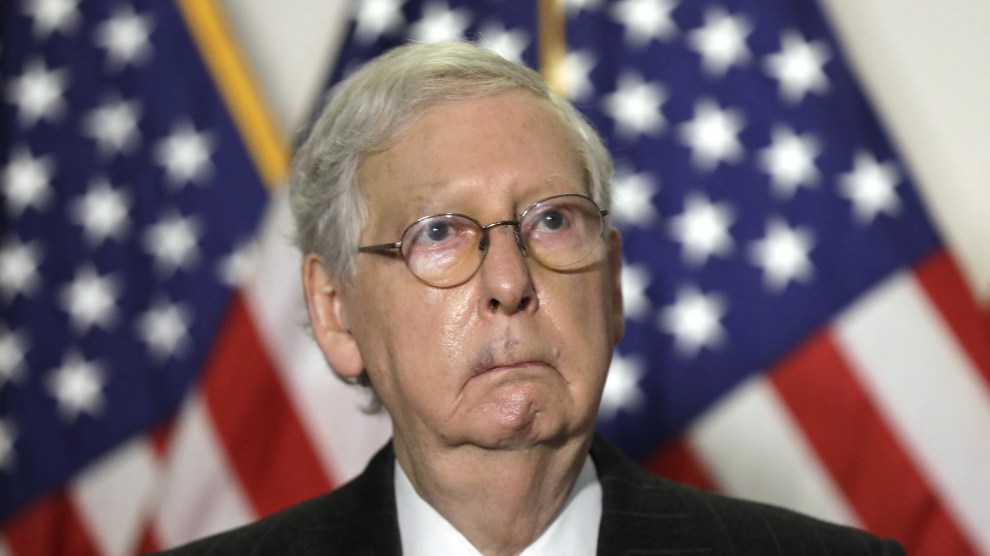
Jabin Botsford/Washington Post/Getty
Donald Trump will leave office with the lowest favorability numbers of his presidency, according to a CNN poll released on Sunday.
Only 34 percent of respondents approve of the way Trump is handling his job, compared to 44 percent at the start of his term and a high-mark of 45 percent as recently as May. The poll, conducted by Pennsylvania research company SSRS, showed a deep split among Republicans as to the influence of Trump going forward. As CNN’s polling director Jennifer Agiesta writes:
The public overwhelmingly wants to see the Republican Party move on from Trump once he’s left office. Overall, just 19% say the party ought to continue to treat Trump as its leader, while 77% say it should move on. Among Republicans, views are split, with 48% saying the party should move on and 47% saying the party should continue to treat Trump as the leader of the party. Independents who lean toward the Republican Party, however, are much more likely to say the party should move on from Trump (62% feel that way).
CNN’s results generally track with other polling that has found Trump’s approval rating nosediving in his final days in office. But the most serious reckoning will have to take place within the fractured GOP. As my colleague Inae Oh reported last week, “Republicans drove the sharpest decline in Trump’s approval rating.”
CNN’s results bear out the reality that self-identified Republicans view their own party more unfavorably since Trump’s election loss. Ninety-two percent of Republican respondents viewed the GOP favorably in October, per CNN’s poll, in contrast to 76 percent now. That relatively high approval rating, however, does not reflect what the New York Times reports is “bitter infighting [that] underscores the deep divisions Mr. Trump has created in the GOP and all but insures that the next campaign will represent a pivotal test of the party’s direction, with a series of clashes looming in the months ahead.”
Congressional leaders—never a popular bunch with the general public—remain strikingly unpopular, though Sen. Mitch McConnell (R-Ky.), the soon-to-be Republican minority leader, is the most unpopular by a wide margin. McConnell was viewed negatively by 66 percent of respondents, higher than in any prior CNN poll. Only 33 percent of respondents view the House’s top Republican, Rep. Kevin McCarthy (D-Calif.), negatively, though he also is less well-known than McConnell. (Forty-two percent of respondents said they had no opinion of McCarthy.)
As for the Democratic leaders, 41 percent of respondents view incoming Senate Majority Leader Chuck Schumer (D-NY) unfavorably, compared to just 39 percent who view him positively. Speaker of the House Nancy Pelosi (D-Calif.) is more polarizing: 84 percent of Democrats view her favorably and 94 percent of Republicans view her negatively.














